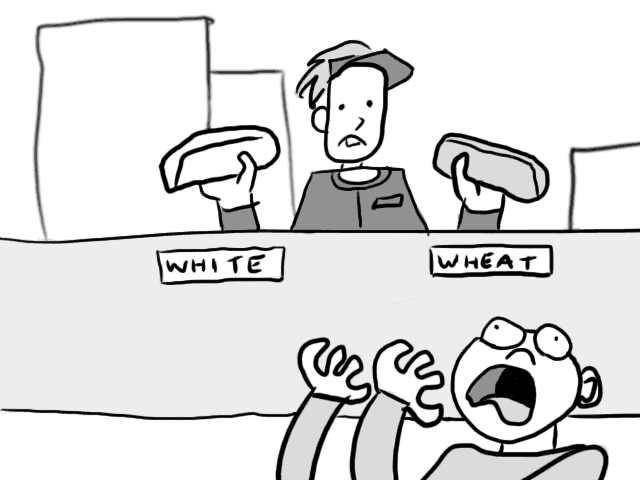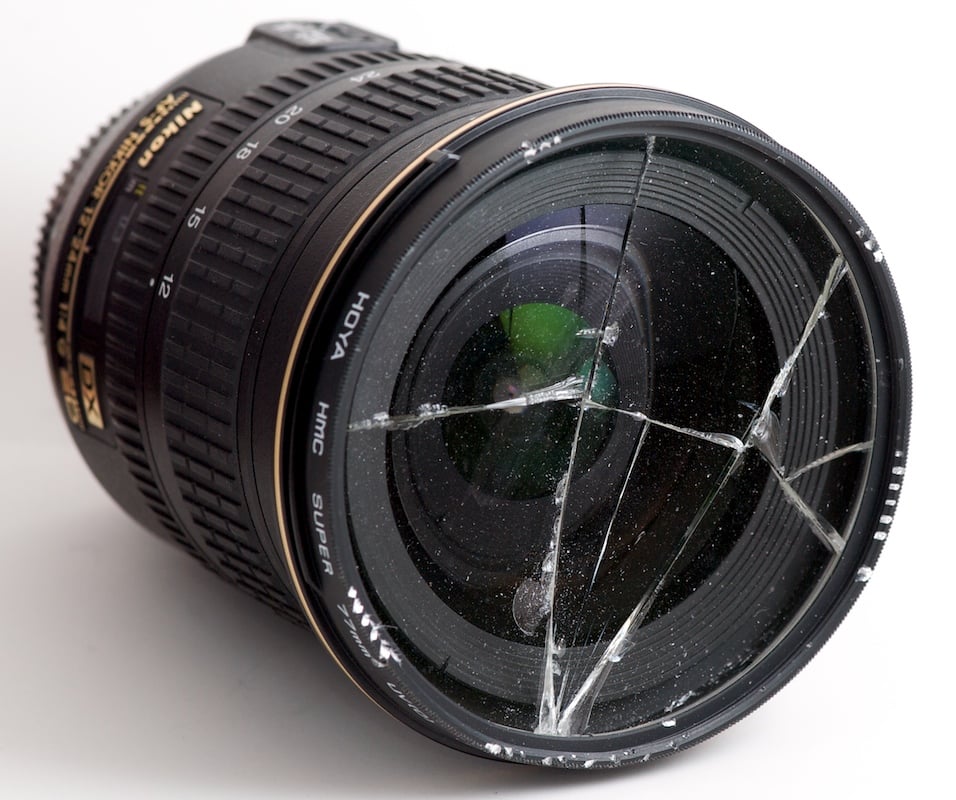There’s an old saying in the video production business: “cheap, quick, and great – pick two.” Because you can’t have it all! If your video is quick and great, it’s not going to be cheap. If it’s cheap and great, it won’t be produced quickly. And if it’s cheap and quick? Well…you’re going to get what you paid for.
While saving money on your video marketing budget is certainly desirable, keep in mind that cheap, quick, and great don’t all go together. You’ve been warned – sometimes fixing the problems a cheap video campaign creates ends up costing more in the long run.
But are thee ways to save money on video? Absolutely. There are plenty of ways, actually, and a number of great companies that are more than willing to help lighten the load along each step of the way. The key is understanding how to reduce your expenses along each stage of the video production process, including pre-production, production, and post-production.
Saving Money on Pre-Production
Pre-production is the step of the video production process that happens before the cameras start rolling. It’s when you have to budget, plan, and propose. If you want to save money, this is when you start doing so.
1. Pick a budget
Remember what we said about cheap and quick versus cheap and great? You can either cut down on production time, or sacrifice quality for a quick deliverable. You can’t have everything.
Once you’ve decided on the quality of video you’re comfortable with, you should take the time to really map it out. Have you ever produced a video before? If not, go online and search for ways to keep a video budget under control. If you’re already familiar with budgeting, then start asking yourself qualifying questions, like:
- Does my project need a professional script?
- Should I work with an agency or freelance videographers?
- Do I want live-action or animation? If live-action,
- How many actors do I need for the project?
- How many sets do I want?
- How many locations will I probably need to shoot on?
- How much equipment will I have to rent?
- How many videos do I want to shoot at once? Will this be a video series?
While you may only have an idea at this point, all of this matters a great deal. You’re allowed to change around the budget as much as you want right now, because trying to do so later on will cost you big time.
2. Prepare Your Proposal
Once you’ve answered the high-level budgeting questions, you should focus in on the project proposal. Also known as a “production brief” in video lingo, this proposal should be a concise one-pager that describes your project’s scope sufficiently to justify each part of the budget. The production brief should answer basic “Five Ws” type questions, like:
- What’s the objective?
- What’s the goal?
- Who’s watching?
- What’s the key message?
- What is the video style?
- How long is it?
- How will you distribute?
- When is the deadline?
- What’s the budget?
Not only will you need a production brief to get approval before the project can take flight, you’ll need one just to start a conversation with outside producers and directors. Everyone has to be able to manage their expectations.
3. Be informed of your choices
Pre-production is also the time to find out exactly what your options are, especially when it comes to working with third party vendors. Stumbling upon a great “Oh, I could have used that!” product or service in the middle of post-production isn’t going to help anyone.
Fortunately, we’ve taken the time to gather together a short list of useful video production services. You may find some of them useful, and others useless. It all depends on the project you have in mind, as well as the strengths and weaknesses of your marketing team:
Your video production will be based on two documents – your production brief and your script. Needless to say, you could use some professional help preparing both. Conveniently enough, Scripted is a content writing service that began with scriptwriting services, and offers help with scripts at very competitive rates (compared to the EFA’s standard rates).
Fiverr is useful for a lot of things. When it comes to video production, it is a great resource for quick and cheap voiceovers, actor testimonials, and custom-made music for video production. Most of the time, you’ll be getting exactly what you paid for. But some Fiverr creatives have pretty stellar ratings and rave reviews.
What’s an infographic got to do with video production? Good question. If you’re making an animated explainer video, for example – an infographic can often help you preview the data and see whether it’s as compelling as you think it is with the added bonus of an affordable infographic that can also stand on its own. Why not throw two outs with one pitch? Many famous animated business videos are actually just a series of motion infographics.
VoiceBunny takes the guesswork out of voiceovers with a simple, user-friendly service that has amazing turnaround times. With access to over 10,000 voiceover professionals, there are few voiceover needs that Bunny Inc. can’t meet.
Saving Money on Production
Production is the stage of the process during which the shoot occurs. Ideally, this stage should take as little time as possible because it will slice and dice up your budget with each billable hour. (Are you sure you don’t want to stay in pre-production just a little longer?)
By now you should have chosen a style for the video. You should have also cast all actors, scouted all locations, and budgeted for the video crew’s every need. You should have a day-by-day breakdown, or shooting schedule, of exactly what will happen. Now’s the time to:
5. Communicate efficiently
 Most of the time, you’ll be working with a team of people or an individual freelancer who will report to you remotely and in-person. You’ll probably have spent plenty of time communicating remotely during the pre-production process and working out the kinks, so it may be tempting to simply sit back and hit autopilot during production.
Most of the time, you’ll be working with a team of people or an individual freelancer who will report to you remotely and in-person. You’ll probably have spent plenty of time communicating remotely during the pre-production process and working out the kinks, so it may be tempting to simply sit back and hit autopilot during production.
But keep in mind that face-to-face communication is priceless. Now’s the best time for you to ask any remaining questions, add in suggestions, and voice concerns. If you can, be in the room while the camera is rolling so that you can catch any problems before they reach post-production. Learn how to better communicate with creatives and agencies.
6. Stop micromanaging
But this doesn’t mean that you should start quarterbacking, either. There’s a reason you hired other people to make this video for you, after all.
Let them do their job and do yours by being the client. Don’t micromanage. Even if the video isn’t proceeding the way you’d envisioned it, realize that the production stage is not indicative of the final product. There is still post-production, when footage gets edited.
Manage your expectations. No matter what you think, even if you’re the CEO – you’re not the director. Trust in the people you hired to do the job. Especially if you’re being billed by the hour.
7. Get insured!
Notice how this one has an exclamation mark?
Getting insured is easily the most important way to save money on video in the long run. A sizeable production has so many moving parts and so many risks that not getting insured should be tantamount to criminal neglect.
What should you get insured for? Just about everything. For example, did you think of:
- General Production Liability Insurance?
- Negative Film/Videotape Insurance?
- Props, Set, and Wardrobe Insurance?
- Equipment Owned & Rented Insurance?
- Third Party Property Damage Insurance?
- Personal Injury Insurance?
- Fire Damage Insurance?
- Medical Expense Insurance?
- Faulty Coverages Insurance?
Proper insurance coverage alone is a great reason to build a relationship with a producer you can rely on and trust.
Saving Money on Post-Production
At the finish line waits post-production, the stage where A-roll and B-roll footage gets edited together into something that hopefully resembles what you had outlined in your production brief.
By now, the worst has already passed, and there is no looking back. The footage you have is the footage you are going to use to make this video shine. Keep that in mind, keep managing those expectations, and keep saving!
8. Quell your inner editor
As any writer will tell you, the inner editor is both a blessing and a curse. We all have one, and any responsible, results-driven professional probably has a particularly persuasive one. But post-production is not the time to give in.
Every time you ask for an edit, the editor has to go back and make changes, then wait for your approval. Once you see the latest changes, you may be tempted to go back and ask for more changes. The editor will then make these changes, which might introduce unforeseen problems, and has to wait for your approval yet again. See the pattern?
Take your time to really review the video and understand what professional post-production looks like. Keep in mind that changes outside the scope of the footage you already have will bring the project back into the production stage, which is almost never worth it.
9. Avoid licenses
Even if your producer has access to excellent music – try to avoid it if it comes with a license.
Unless you can afford to spend tens of thousands of dollars or more on your video, you probably don’t want the added strain a license will invariably introduce to your budget. Licenses are expensive, no question about it, and they’re also usually one-use only. Meaning that you’ll have to pay again for a song that you want to reuse in another project.
Music isn’t the only thing that you might have to pay an additional licensing fee for. Stock images, stock footage, and sound effects are all potential candidates, too. In other words, now’s the time to decide whether you want to swap out a licensed element for an unlicensed one.
10. Talk about next time
No video is perfect. When the finished product is finally in your hands, it’s likely you’ll have already thought of ways to do it better or ways you could have shaved off a couple hundred (or thousand) extra.
But in the wise words of Mark Zuckerberg, “Done is better than perfect.” Once a video is complete, it’s best not to dwell on possible improvements. Because, guess what? They’re not really affordable at this point.
Instead, talk with your producer and your team about how you can make the next video better, drawing from the mistakes and successes of the most recent production. Next play.
(Image credits to Blonde Films, St. John Lutheran, Priceless Professional, Crystal Links, Oh Yes We Cam)














